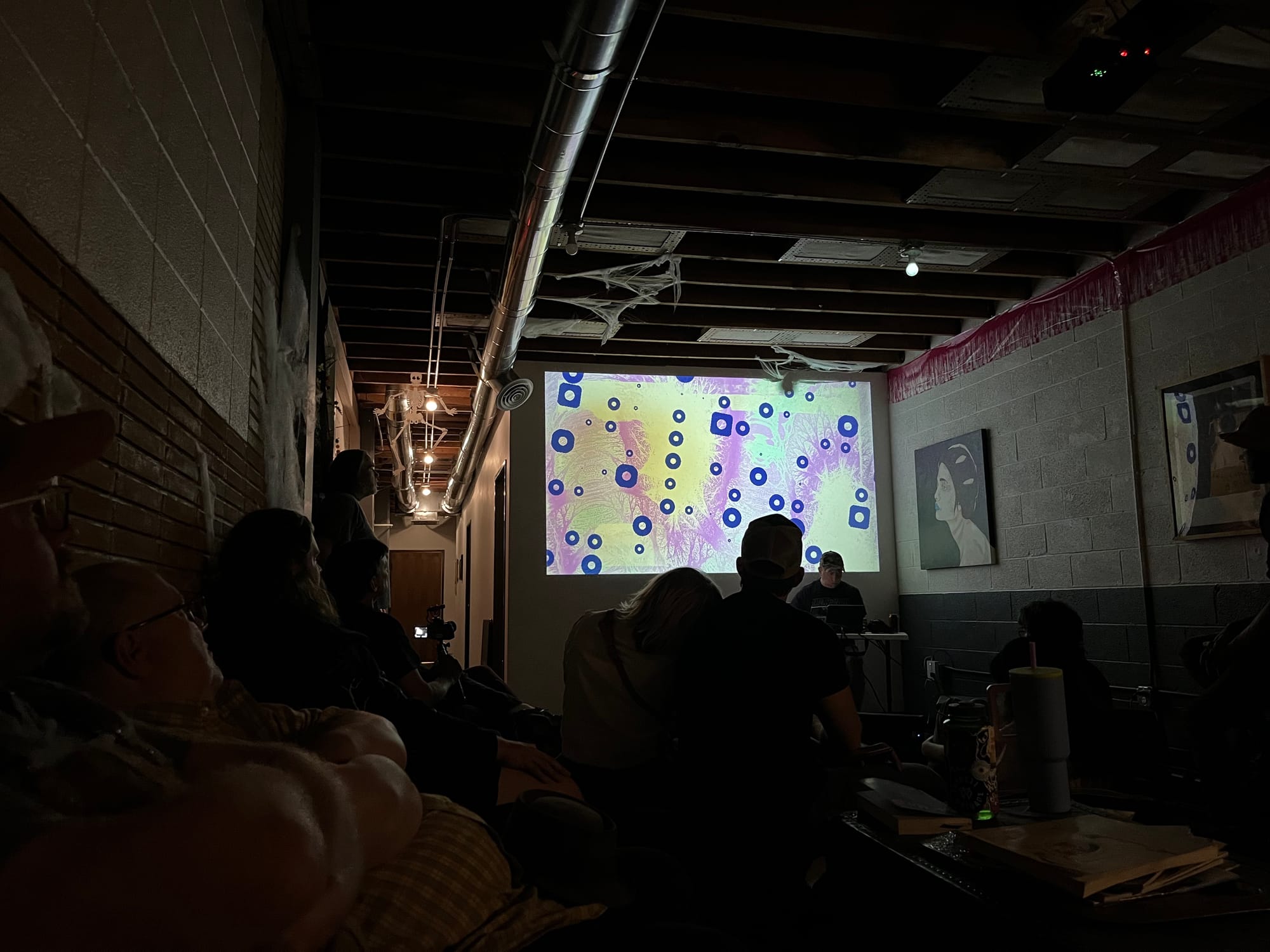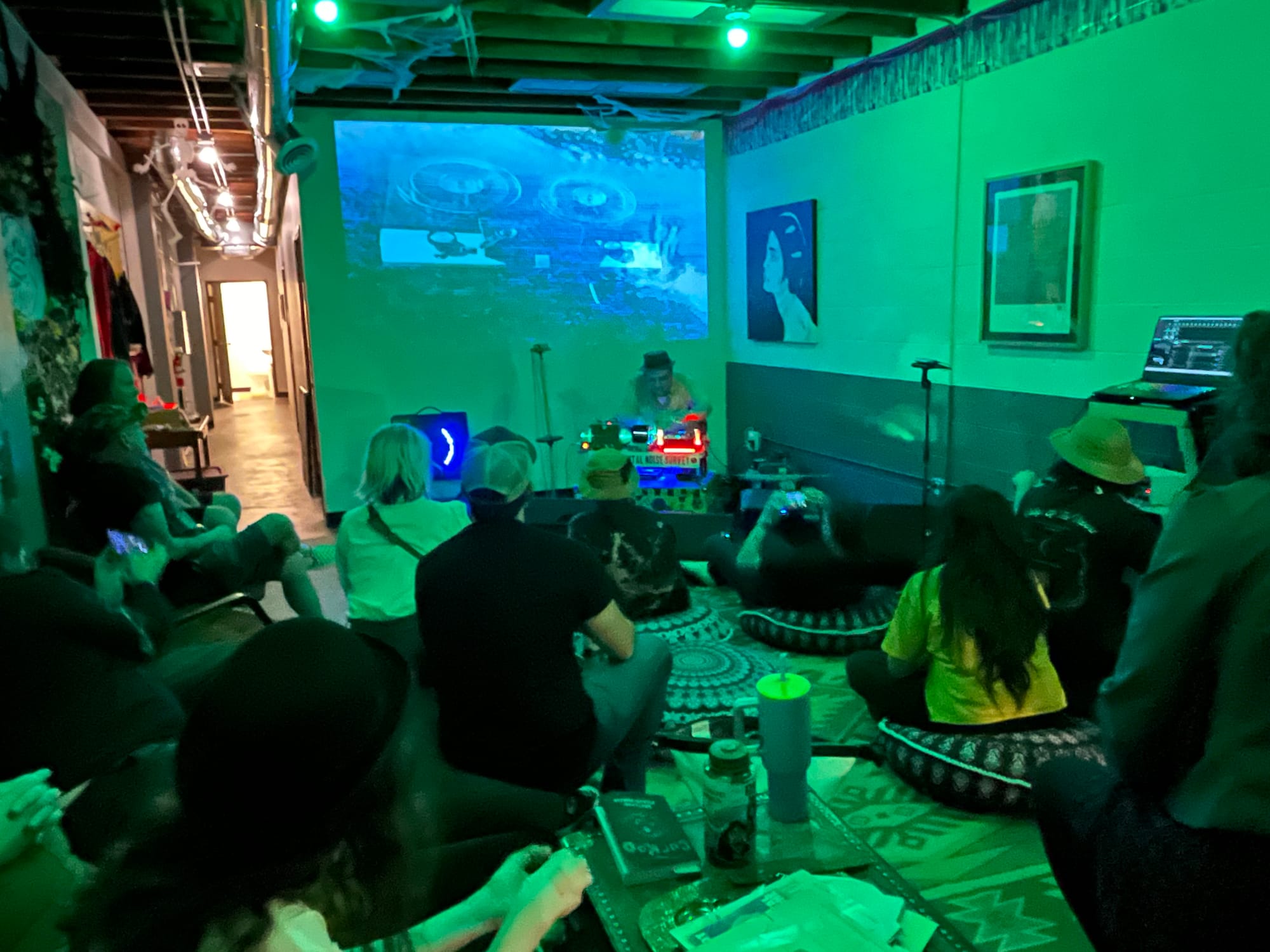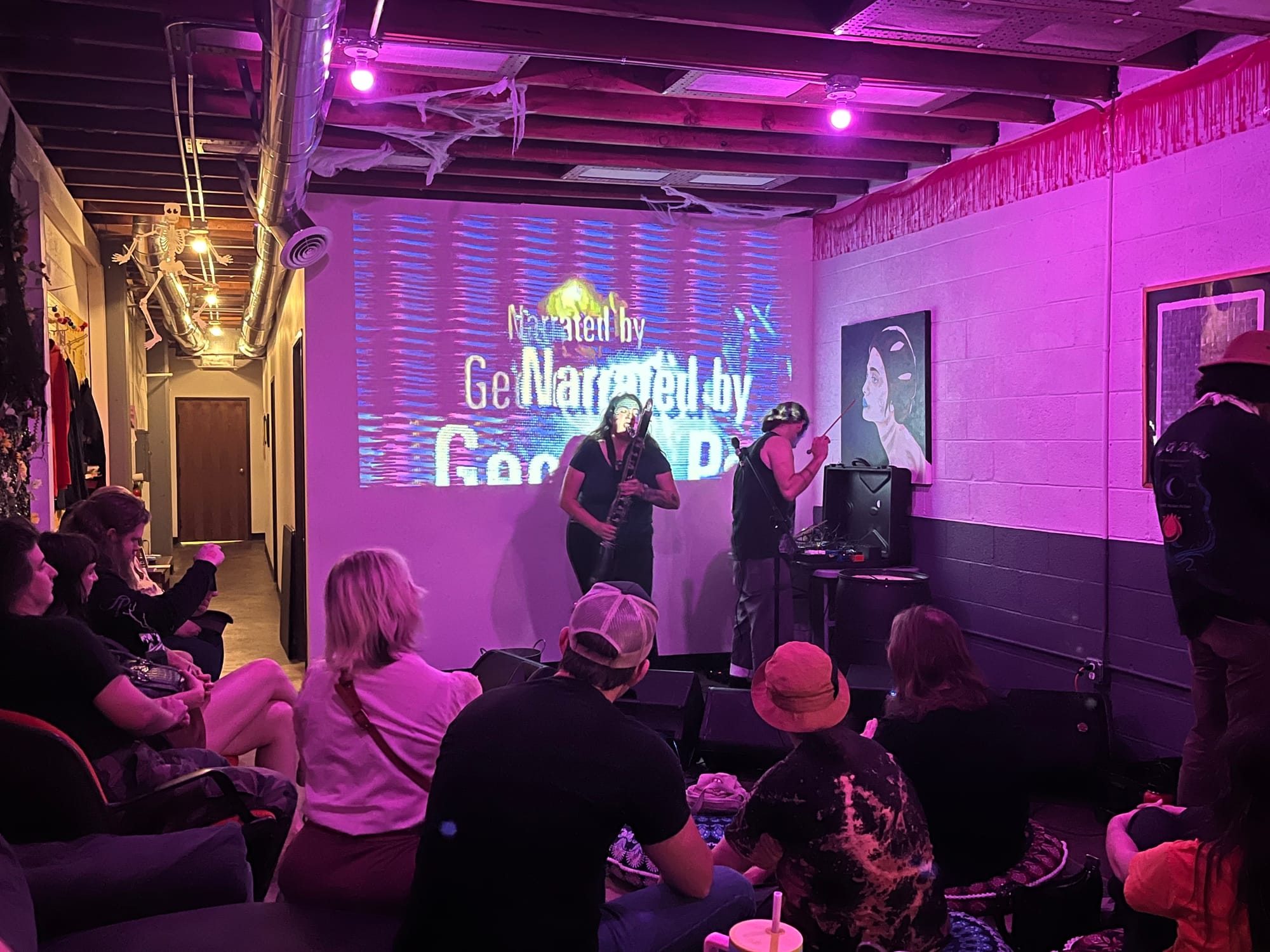ONE AUX: A Night Of Experimental Music & Noise
Noise Town
October 24, 2024
When the world is too much for me, I look for the nearest One Aux showcase and gird my ears alongside a crowd of noise lovers. I’m apparently not the only one whose nervous system is soothed rather than agitated by the sounds of scraping metal and shrieking feedback. Thursday night’s crowd at Noise Town included a handful of regulars, several first-time attendees, and a Texan who planned a whole trip to Tulsa around making it to the show.
Like the monthly open mics Carl Antonowicz and Todd Woodlan host as One Aux, their curated showcase nights are different every time, featuring a broad mix of experimental musicians from across the region and beyond. “I can’t believe I didn’t know this was a thing” is the kind of comment I often hear from attendees as we chat between sets—and there’s plenty of time for chatting, since setting up and tearing down is a whole job for these musicians, whose paraphernalia ranges from sound boards and electronic business to saws, bows and trash cans. Antonowicz and Woodlan have adopted the word “gonkulate” from musician Tim Kaiser to describe what these artists do, and this five-act night was an extravaganza of gonkulation.

Bird Drugs (a Norman musician who describes his music as “anti-ambient softcore noise”) kicked things off with a seamless set that started with a kidney-rattling frequency, sank into a simple line of descending notes, and swelled to end in what felt like an industrial washing machine.
Behind Bird Drugs’ set, resident video artist Small Rock mashed up pixelated home movies on film (a man in a yard, a bridge, national monument signage, grandma on a beach) with undulating smears of color like blood vessels made of solar plasma. Sound and vision made “meaning” together here in the same way a wind-whipped tree and a soaring hawk might as you look out over a landscape: it’s not “content” that you experience, but rather a series of arbitrary associations that hum with ungraspable resonance.
When I say Dave Broome plays the piano, I mean he plays with it—with his own skill, and with any and all expectations of what a pianist and his instrument can do. The audience joined in the joyous cackle with which he ended his set, an unhinged 15 minutes featuring an augmented melodica and a giant red squeaky hammer struck onto a contact mic. The overall-clad virtuoso made music from a universe just to the left of our own: cartoon harmonica noises, the clank of anvils, a splattering of sounds with no classifiable origin or purpose except Broome’s own delight. I can’t begin to tell you what a pleasure it is to see a Manhattan School of Music-trained pianist who’s performed at Carnegie Hall thwack a kid’s toy with precision timing as he honks into a tube and bangs out notes worthy of Webern on tiny plastic keys.

From Duluth, Minnesota came Tim Kaiser, currently on tour up and down the central U.S., who brought his “Experimental Noise Survey” to the gathering. It’s an arcade-lit setup surrounded by handmade acousto-electric contraptions (as he describes them): a cube studded with long spikes, a metal plate, a handheld something that groaned as he massaged it, and a chunky wind-up music box, all of which got variously bowed or manipulated in a series of sonic vignettes. Kaiser is a legend in the “Weirdo Industrial Complex,” and hearing him mash sound through these instruments (and his own intuitive imagination) was both education and treat.

The night’s final two acts—A Magpie & A Crow, and Tree // Nature performing with Pete Tomshany—brought the show home with improvisational gusto. With her colossal contralto clarinet, Ashley Apodaca (the Magpie) breathed deep whale exhalations into the space as Antonowicz (the Crow) tapped on a 35-gallon drum with wires strung across the top, rippled a sheet of steel, and cathartically yelled into a contact mic held against his throat. As their sounds staggered together through a loop device, it became wonderfully, disorientingly unclear what was reed, what was voice, what was touch, and what was feedback. (Special shout out to Apodaca for playing clarinet and trash can simultaneously.)

When asked the name of their first song, Tree // Nature came up with something on the spot: “‘Circles.’ Uh, ‘Sharp Circles!’” Perfect. A trans artist with autism, they’re developing the possibilities of their Rotary Harmonic Tube Zither with every performance they do around town; if you have a chance to catch it in action, take it. Tomshany brought a shotgun case of saws to the gig and accompanied the zither’s spinning with a spangle of metal, which he clinked and scraped on the concrete floor or struck with mallets. Tree // Nature bowed the zither like they were carving tracks in clay, as Tomshany actively listened and responded to the strings. Hollow bongs, tinkling chimes, a thwup and a rumble—it was a soundscape unique to these artists and this moment.
A One Aux event is kind of like a marathon. It’s long (this one clocked in at three hours), but once you’re in it, it becomes a kind of meditation, with its own distinct endorphin high. Ten bucks got me a whole night of creative laboratory action, a few new pals, and—as usual—a fresh appreciation for the mischievous, investigative, risk-taking chops of the friendly artists who gather around the One Aux cable.





